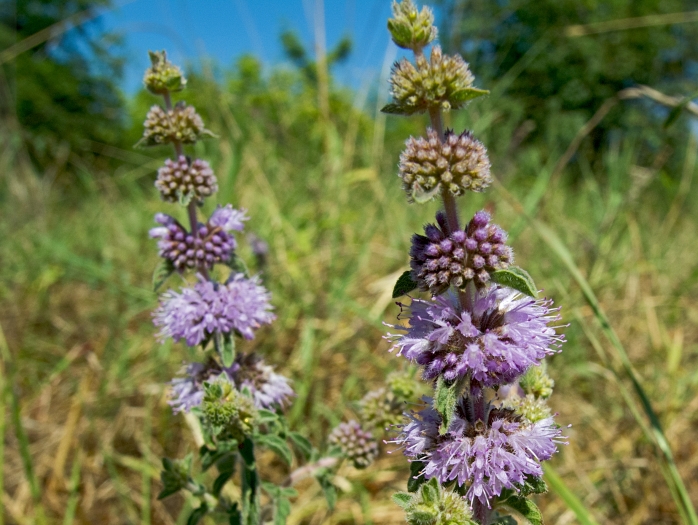Pennyroyal
(Mentha pulegium)
Pennyroyal (Mentha pulegium)
/
/

Katyafrom Moscow, Russia
CC BY-SA 2.0









































































Estimated Native Range
Summary
Pennyroyal is valued for its intense minty fragrance, which is released when the leaves are crushed. It is often used in herb gardens, as a ground cover, and for its historical use in herbal medicine, though it should be used with caution due to its toxic properties when ingested in large quantities. It prefers full sun to part shade and requires consistently moist soil with good drainage. While it can tolerate a range of soil types, it flourishes in loamy or clay soils. Pennyroyal can be propagated easily by division or cuttings. However, it is known to be potentially invasive outside its native range and can spread aggressively, especially in California. It is also susceptible to rust and other fungal diseases.CC BY-SA 4.0
Plant Description
- Plant Type: Herb, Subshrub
- Height: 0.5-1 feet
- Width: 3-6 feet
- Growth Rate: Moderate
- Flower Color: Purple
- Flowering Season: Summer, Fall
- Leaf Retention: Evergreen
Growth Requirements
- Sun: Full Sun, Part Shade
- Water: Medium
- Drainage: Fast, Medium, Slow
Common Uses
Bank Stabilization, Bee Garden, Bird Garden, Butterfly Garden, Deer Resistant, Fragrant, Hummingbird Garden, Low Maintenance, Rabbit Resistant, Showy Flowers, Water Garden
Natural Habitat
Moist, open habitats such as riverbanks, natural springs, and damp grasslands
Other Names
Common Names: Pennyrile, Mosquito Plant, Pudding Grass, Penny-Royal, European Pennyroyal, Poleiminze, Polei-Minze, Menthe Pouliot, Polei, Pennyroyoal
Scientific Names: , Mentha pulegium, Mentha pulegium subsp. pulegium, Pulegium vulgare, Mentha pulegium var. tomentella, Mentha pulegium var. erecta, Mentha gibraltarica, Mentha pulegium var. hirsuta, Mentha pulegium subsp. vulgaris, Mentha tomentella
GBIF Accepted Name: Mentha pulegium L.